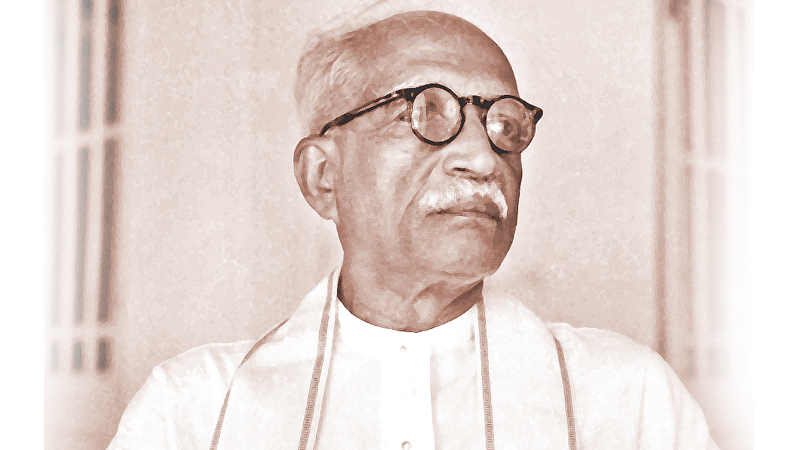by Ruth Surenthiraraj
In her Kuppi Talk article “The dispossession of a voice through English in Sri Lanka” (6 February 2024), Selvaraj Vishvika delves into the myriad troubles that accompany the imposition of standards on the English language learner in Sri Lanka. Chief among her reflections is the sordid reality every ELT (English language teaching) practitioner must face at some point: that we do in fact disallow for learners’ expression of ideas when we get myopic about maintaining ‘standards’. Extending this argument further, Maduranga Kalugampitiya (“Positioning the idea of Sri Lankan English in the field of English language teaching in Sri Lanka”, published 2 April 2024) argues that a realistic standard should necessarily be one that contextualises itself to its locality, allowing for users to adapt it to their circumstances. For the purposes of this article, ‘standards’ refer to the expectations we often attach to the production of language, especially with regard to learners. For instance, we might bemoan the inaccuracy of their expression or their inability to spell accurately. These inevitably hark back to some abstract level of competency that we have recognized as being a ‘valid’ form of expression.
Both authors are clear in their prioritisation of the learners/users of the language. To put things bluntly, standards are extremely problematic because they are not simply harmless hierarchies to organise and label parts of a language. They are often steeped in particular histories and privilege certain cultures or classed lifestyles. They draw very clear battle lines and demand that we pick sides. And if we are honest with ourselves, ELT practitioners will always err on the side of perfection. Ensuring that our learners remain at the center of our teaching, however, gives us a chance to carefully navigate the murky waters of standards with due caution.
I will not, in this short piece, pretend to add anything out of the ordinary to decades-long academic and popular debate. In fact, I am keenly aware that we constantly inhabit the paradox of having to give our learners the space to explore their own usage of the English language while being acutely aware of external standards that are being constantly imposed on our students. It is frankly irresponsible and escapist to adopt the position that anything goes when we are painfully aware of the fact that producing particular types of utterances could decide whether our students stand a chance at getting a job or not. So, I think it is important to acknowledge and accept that most of the time, ELT practitioners will need to wrestle with the paradoxical world of standards. What I will try to reflect on are some practices I routinely engage in to ensure that I do not sacrifice my students on the altar of perfection.
Acknowledging teacher subjectivities in the classroom
Over the past couple of decades, qualitative research in humanities and social sciences disciplines has surfaced even more clearly the need for researchers to acknowledge their own subjective positions in the act of studying a phenomenon. For instance, a researcher might assume that they are studying a phenomenon by objectively observing it. However, awareness of their subjectivity might force them to question how their upbringing or economic status impacts how they interpret a particular phenomenon and its significance to the observed community. ELT has also benefited from this increased awareness of teacher identities because it compels us to acknowledge how we position ourselves when we are in the classroom. For example, our individual journeys of learning the language have a very strong influence over how we expect our learners to engage with the language. However, ELT classrooms still tend to be sanitised of any chance to interrogate standards or reflect on teacher subjectivities, due mostly to perceived time constraints and assumed lack of student interest/engagement with anything other than a demonstrably ‘correct’ answer.
Some of this is most certainly rooted in our refusal to put ourselves in positions of vulnerability. In this, we inherit a long and pervasive tradition of the teacher needing to be the fount of all knowledge – which in this day and age of generative artificial intelligence and increased access to assistive tools is, quite frankly, hilarious. So, as difficult as it is, I try to explain to students why I say what I do, and how I might be influenced by my middle class, urban upbringing in preferring certain standards over others. This allows the students to know that although they may regard me as the expert, I too have my own deep-seated biases. It alerts them to the fact that they need not necessarily adopt my stances uncritically, and it opens up the space for me to be challenged if they wish to do so.
Drawing attention to multiple standards
Perhaps a related struggle that ELT practitioners encounter is the reality that there are a variety of competing (and occasionally contradictory) standards floating around. If language is constantly evolving, then it is undeniably shaped by the context it is located in. Take for instance how each ‘generation’ seems to have made certain expressions their own. The slang that each generation uses becomes particularly steeped in their contemporary circumstances and becomes almost unintelligible to the preceding/following generation. Add to this the fact that this ‘lingo’ is also liable to change or become unintelligible when it shifts across regions or even social media platforms. But this is how language has always functioned – and English is an evolutionary monstrosity that keeps feeding on multiple cultures.
In my classroom, this reality compels me to alert my students to as many available standards that they might encounter. These standards may be straightforward – like how certain words are pronounced – or they may be extralinguistic – like how your pronunciation can decide whether you might be accepted into certain circles. However, it is an uphill task to maintain this kind of nuance consistently, particularly when faced with severe time constraints. Nuance may also be counterproductive if it overwhelms rather than encourages the learner. So, highlighting the existence of multiple standards must be maintained, but being attuned to learner needs and responses is also crucially important in making this work.
Engaging dialogically with assessment standards
Assessments like TOEFL and IELTS have long been criticized for their perceived bias against those who use English in countries like ours. You could have been born spouting the King’s English, but you will still have to prove that you know your way around a subordinating clause if you want to study or work in an English-speaking country. Whereas there is really no guarantee that the apparent ‘native’ speaker of English can match your knowledge of and proficiency in the language. Debates around this issue have served to unmask how arbitrary some language standards can be and how problematic they are when applied uncritically across the board. But this could be true of any standard, so it becomes important to be in constant dialogue with what we assume is the standard.
One way I practice this in my own classroom is by making marking rubrics available for student feedback well ahead of the assessment. At the first stage, I introduce a simplified rubric that we discuss, modify, and use for peer feedback. In the process of giving their peers feedback, they need to engage with how they will interpret the standards present in the rubrics. This often leads to some interesting conversations in class and functions as a way for students to see that language and the expectations it sets up are very contextual. We then go on to discuss the rubric I will use for their continuous or final assessment, and students are now in a better position to voice their concerns on rubrics and assessment expectations because they have engaged in a similar practice before. The key is to ensure that learners never feel threatened by a standard but are instead confident to interrogate it even as they are familiarising themselves with it.
Some final considerations
A nuanced understanding of a language in its contextual habitat requires time and a willingness to be transparent about the agendas that seem to drive the standards we communicate to learners. It is also an invitation to us as ELT practitioners to revisit our own subjectivities in order to truly engage our learners in a holistic and dialogic process of language learning. In doing this, we give learners the ability to spot multiple standards at play and make reasonably informed choices that allow them to position themselves in the way that reflects them best. Knowing that they can choose how to adapt to, accommodate, or subvert standards, I would argue, allows learners to make their second languages fully their own.



